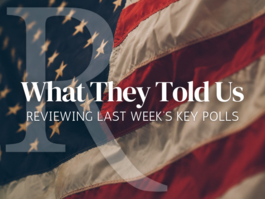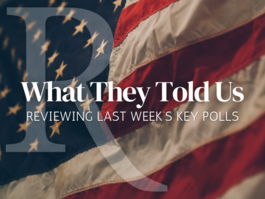Behold, the Magic Kingdom of Dynamic Scoring
A Commentary By Froma Harrop
While most citizens were distracted by the holidays, the enlarged Republican majority in Congress was laying golden pavers for its magical kingdom -- a fabulous place where taxes are cut, military spending is not and budgets balance effortlessly. The coat of arms reads, "Tax Cuts Pay for Themselves."
And to think the rubble has hardly been cleared from the ruins of the most recent magical kingdom, that ruled by George W. Bush. Not only did the Bush tax cuts not pay for themselves but tax revenue as a share of the economy today isn't even close to what it was in 2000.
So how can Republican leaders restore the realm? For starters, they've launched a campaign to replace Doug Elmendorf, the economist overseeing the Congressional Budget Office. The CBO is the nonpartisan agency that estimates the cost of legislation.
Let it be noted that prominent conservative economists -- among them Gregory Mankiw, chairman of W.'s Council of Economic Advisers -- have called for Elmendorf's reappointment. Elmendorf "is a superb economist and, over the past six years as CBO director, has shown himself to be scrupulously nonpartisan," Mankiw said.
But nonpartisan may not be partisan enough for tax cut activists. They want the bean counters to make the numbers work for them through the powers of "dynamic scoring."
The idea that reducing taxes could unleash new economic activity, generating new tax revenues, is not without merit. Dynamic scoring factors in those revenues. Count them, Republicans insist, and the burden of finding painful ways to pay for tax cuts is lightened. That makes tax cutting easier.
Rep. Paul Ryan, the incoming chairman of the House Ways and Means Committee, calls dynamic scoring "reality-based scoring."
The problem is the ease with which politicians can make their own reality. Dynamic scoring is a dark art, producing wildly different estimates, depending on the choice of economic model and other assumptions. For example, some kinds of tax cuts raise more revenues than other kinds.
Another nonpartisan office, the Joint Committee on Taxation, did apply dynamic scoring to the tax reform plan submitted by retiring House Ways and Means Chairman Dave Camp. The result was eight scenarios, some considerably rosier than others. At the low end, the Camp plan would raise only $50 billion in additional revenue over 10 years. The high-end estimate was $700 billion -- 14 times the low one.
Furthermore, the optimistic $700 billion figure included deficit reductions that future Congresses might make. Some of the assumed policy changes weren't even mentioned in the Camp plan.
Bruce Bartlett, an economist in the Reagan and George H.W. administrations, points to another flaw in the Republicans' approach: the highly selective use of dynamic scoring on some elements of their proposals but not others.
"Republicans want to use dynamic scoring only for tax cuts," Bartlett wrote me in an email. "They refuse to acknowledge that spending, such as public works spending, also has dynamic effects. They should either do it for spending and taxes or not at all."
Bartlett added that "spending cuts can have negative dynamic effects that Republicans also never acknowledge.
The Joint Committee on Taxation's models are themselves problematic, according to the liberal Center on Budget and Policy Priorities. For example, they count the economic benefits of investments in new machinery but not investments in worker training. Human capital doesn't get much attention.
But even when score-makers do their darnedest, they're working with numbers pulled from air. So Republicans can use butterfly nets to catch those guesses that produce the conclusions they want. Bear in mind, the last time they performed their tax cut magic trick, things didn't work out too well.
Follow Froma Harrop on Twitter @FromaHarrop. She can be reached at fharrop@gmail.com. To find out more about Froma Harrop and read features by other Creators writers and cartoonists, visit the Creators Web page at www.creators.com.
COPYRIGHT 2014 CREATORS.COM
See Other Political Commentary.
See Other Commentaries by Froma Harrop.
Views expressed in this column are those of the author, not those of Rasmussen Reports. Comments about this content should be directed to the author or syndicate.
Rasmussen Reports is a media company specializing in the collection, publication and distribution of public opinion information.
We conduct public opinion polls on a variety of topics to inform our audience on events in the news and other topics of interest. To ensure editorial control and independence, we pay for the polls ourselves and generate revenue through the sale of subscriptions, sponsorships, and advertising. Nightly polling on politics, business and lifestyle topics provides the content to update the Rasmussen Reports web site many times each day. If it's in the news, it's in our polls. Additionally, the data drives a daily update newsletter and various media outlets across the country.
Some information, including the Rasmussen Reports daily Presidential Tracking Poll and commentaries are available for free to the general public. Subscriptions are available for $4.95 a month or 34.95 a year that provide subscribers with exclusive access to more than 20 stories per week on upcoming elections, consumer confidence, and issues that affect us all. For those who are really into the numbers, Platinum Members can review demographic crosstabs and a full history of our data.
To learn more about our methodology, click here.



